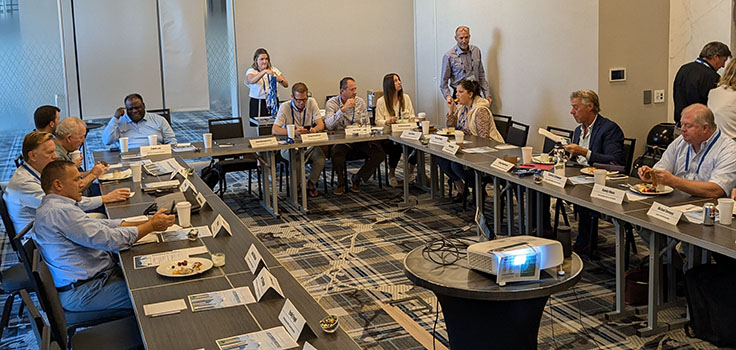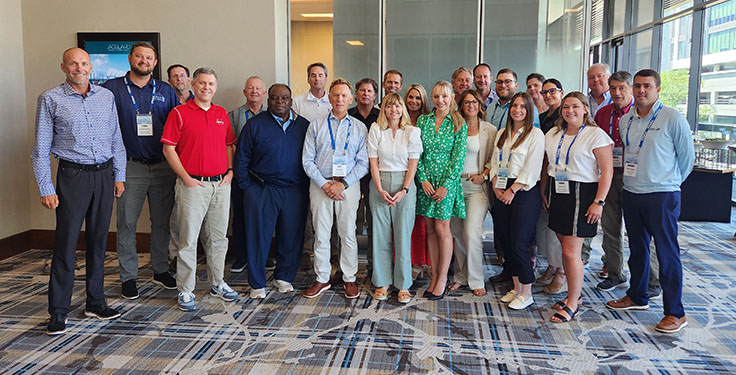Many states have an association that’s either fully or partially dedicated to aggregates.
These organizations advocate to state governments on behalf of their producer members. They provide members with training, host meetings and events, and take the lead on regulatory issues that surface within their states.
The staffs of the aggregate industry’s state associations typically aren’t large. They’re often comprised of an executive director and one or two others.
Still, the executive directors of the industry’s state associations have one other key resource at their disposal to get things done: each other.
For years, many state association executives have participated in an organization called ACE (the Aggregate & Concrete Executives), whose members gather once a year for a summer meeting. During the meeting, participating ACE members exchange ideas and network with one another to further their respective association.
The 2024 ACE Summer Meeting took place last month in Denver, where about 25 executive directors representing aggregate and ready-mixed concrete associations gathered across three days.
“I’m enriching myself with these meetings and learning new things that obviously benefit the association,” says Jeff Wansley, executive director of the Georgia Construction Aggregate Association (GCAA). “This is a time for me to learn and grow.”
The same goes for the other executive directors who’ve attended ACE Summer Meetings over the years.
“ACE is one of the best things I do,” says Dan Kleinsorge, executive director of the Missouri Limestone Producers Association (MLPA). “Coming into the industry new and coming in from government, it’s incredibly valuable to be able see what others do in different states.”
Other perspectives
Cory Lee Ann Shaw, now representing the Washington Aggregates & Concrete Association as executive director, attended her first ACE Meeting last month.
Shaw is not new to association work. She previously served the Montana Building Industry Association, so she is familiar with the nature of an executive director’s job.
Still, Shaw says the ACE Summer Meeting provided her with good value, as she’s in Year 1 running the organization formerly headed by Bruce Chattin.

“The meeting allowed you to step outside the silo of focus,” Shaw says. “It can be easy to get narrowly focused on just your state or just your issues. It was a good reminder that there’s a national focus and there are issues that affect you nationally – and that you can have an impact on that.”
Wansley also derives value out of ACE from this standpoint.
“Just like on the national front, things that start in California eventually work themselves across the country,” says Wansley, who’s now in his 10th year at GCAA. “It is interesting to hear trends in other states.”
State executive directors can draw a variety of comparisons and contrasts by simply hearing from their peers.
“For me personally, [ACE] lets me know I’m doing business in a great state,” Wansley says. “I can remember a few years ago someone talking about how they couldn’t even meet with their environmental agencies. They wouldn’t even talk to them.
“We were like: ‘We have a really good working relationship with ours,’” he adds.
Networking is the biggest opportunity ACE provides to Wansley. During his decade in the industry, Wansley has seen the ACE network grow nicely.
“In the 10 years I’ve been involved, this is probably double the participation,” Wansley says of last month’s summer meeting. “I think we’re at 25 this year, but the first one I went to – which was my second year on the job – we were in Indiana. And I bet there were 10 to 12 people there.”












